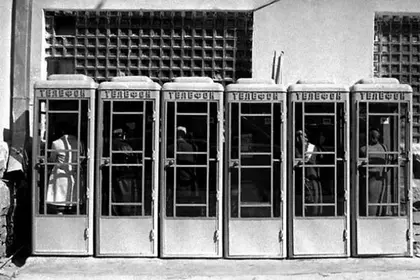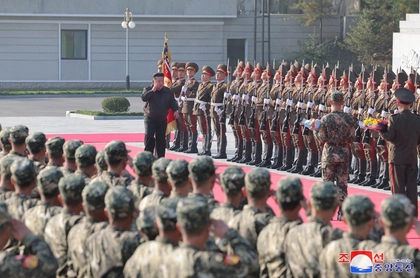While Ukraine has its eyes on the future technology and norms associated with the West and a future of progress leaving the USSR behind, Russian occupying authorities in Donbas are bringing back old-school technology unfamiliar to those who grew up in the post-Soviet world.
Ukrainian experts are trying to understand why the Kyivstar mobile network provider turned out to be so vulnerable to cyber-attacks and wondering how Kyivstar SIM cards got inside the navigation and targeting systems of Russian attack drones that were recently shot down.
JOIN US ON TELEGRAM
Follow our coverage of the war on the @Kyivpost_official.
“There are now more Russians in Severodonetsk than indigenous residents.”
These are questions from a high-tech world and, despite problems for Kyivstar users, most of Ukraine enjoys the benefits of technological advances in communications.
However, in the occupied territories this is not the case, and Russia is bringing payphones to some areas and installing a landline cable telephone system in the cities of the Luhansk region.
Many residents who remained in the occupied areas are just about old enough to remember Soviet payphones and they won’t have to learn how to use them. However, so far, it isn’t clear which coins the payphones will accept or whom you can call from these payphones.
We can assume that it won’t be possible to use them to call relatives in free Ukraine, but someone in Lysychansk, for example, could possibly call another payphone located in Donetsk.
They’ll only have to think of a way to warn friends or relatives in Donetsk so that they are waiting at the right payphone at the right time.

North Korean Troops in Ukraine – A Wake-up Call
Several street payphones are now being installed in occupied Severodonetsk, where out of the previous 100,000 residents, only 15,000 remain. However, every day Russian military personnel and civilians move into still-inhabitable apartments and houses left empty by people who evacuated the city.
“USSR Canteen: From the name of this establishment, we can guess how comfortable it will be and how the food might taste.”
There are now more Russians in Severodonetsk than indigenous residents. In this once large, industrial city, the occupation authorities re-opened a war-damaged kindergarten without repairing it, only hanging a portrait of Putin on the wall.
In the building of the former trolleybus depot, the “USSR Canteen” is preparing to open. They are looking for a cook and other employees. The menu will include “home-cooked dishes” which will be served in a “retro-style” room. From the name of this establishment, we can guess how comfortable it will be and how the food might taste.
Most indigenous residents in Severodonetsk are pensioners for whom the only way to survive was to take a Russian passport and receive a Russian pension. Once a month they go to the post office of the so-called “Luhansk Peoples Republic” to collect their pension before going shopping for groceries at one of the two operating supermarkets.
“LPR Post” is another island of late Soviet life. Here you can subscribe to newspapers and magazines that are printed in Luhansk. These publications are mainly full of crossword puzzles or advice for agricultural enthusiasts.
The most interesting goods at the post office are “LPR” stamps. Since 2015, in both Lugansk and Donetsk, the separatist authorities have been issuing postal stamps that look like Soviet stamps, except that they are not as brightly colored.
The stamps sport images of Soviet World War II heroes, Soviet cosmonauts, poets, and writers. As in the USSR, stamps here are issued on significant anniversaries of the death of a prominent figure.
There are also stamps with the letter “Z” and images of Russian soldiers and tanks. There is even a series of stamps with birds whose habitat is the Luhansk forests.
Since they are very popular among collectors in Russia and Belarus, these stamps are bought up for resale by Russian military personnel, or even by construction workers and officials on business trips in the area.
Stamps issued in Luhansk from 2015 to 2021 have disappeared from the post offices and you can only buy them in Russian online stores for philatelists. Stamps without pictures that only indicate the value are more easily available.
Apparently, these stamps are made especially unattractive so that collectors do not chase after them. However, because these design-free products resemble Soviet stamps from the 1920s and 1930s, they are also attracting the attention of collectors.
An examination of the stamps issued in the occupied Luhansk region indicates that there is not a single talented or even professional artist left in the territory. The poor quality of the stamps sets them apart from those of real countries.
You can also highlight the text and press Ctrl + Enter






